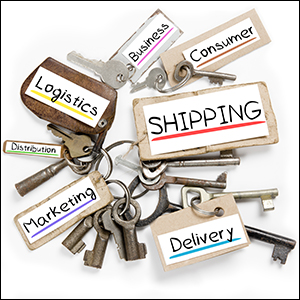 Creating sustainable supply chains is no longer a choice. It’s necessary in today’s world, where climate change, environmental disruptions, and human rights issues are real risks to smooth (and ethical) supply chain management.
Creating sustainable supply chains is no longer a choice. It’s necessary in today’s world, where climate change, environmental disruptions, and human rights issues are real risks to smooth (and ethical) supply chain management.
Waste must be reduced and, in most cases, must be reduced significantly.
Most CEOs think sustainability
should be a primary focus
According to an Accenture survey, 96% of CEOs believe that sustainability should be integrated into every facet of strategy and operations. An overwhelming 88% of them pinpointed supply chains as an area of key importance.
Unfortunately, only 54% of the CEOs surveyed indicated that they had in fact achieved supply chain sustainability. Increasing supply chain sustainability is certainly no easy task, especially considering the massive amount of coordination it requires.
There is no one-size-fits-all plan for restructuring supply chains in order to develop better supply chains. There are some key practices, however, that can help guide businesses down the path to greater sustainability.
Here are 3 keys to developing a sustainable supply chain:
Communicate your vision clearly
L’Oreal’s vision statement for supply chain sustainability very clearly outlines their motivations for developing the best possible practices: “We are committed to building strong and lasting relationships with our customers and our suppliers, founded on trust and mutual benefit. We do business with integrity: we respect the laws of the countries in which we operate and adhere to good corporate governance practices… We are mindful of our impact on the natural environment.
To craft your vision statement, seriously contemplate why you are addressing sustainability. L’Oreal states that they are motivated out of respect for local governance, consumer trust, and environmental impact, for example.
What are your main motivators?
- Are you looking to comply with mandates?
- Are you seeking to have a positive impact on the environment?
- Are you responding to industry pressure?
- Are you seeking to adopt supply chain automation?
- If so, do you want to further your collaboration with automation industry leaders?
Don’t prevaricate. State your reasons for undertaking sustainability precisely and succinctly.
Map and segment your supply chain
Establishing your vision requires mapping and segmenting your supply chain. From this map, you will be able to solidly enforce your vision statement, one that fully recognizes the unique challenges your company and your suppliers face.
Your vision should be clear and concise not only to executive members of the company, but also every employee and entity involved, which can only be done if you have an accurate picture of the supply chain itself.
You’ll need to find your major suppliers and then trace the flow of supplies, information, and services. From there, you must investigate human rights and environmental issues from the top to bottom. Once you’ve created a comprehensive map, you’ll be able to divide the chain into different levels of risk and adjust accordingly.
“The first challenge is to understand the larger system you’re in,” writes Steven Prokesch for the Harvard Business Review, “The second is to learn to work with people you haven’t worked with before. Those two skills might seem distinct, but in practice, they’re interwoven. The system is too complicated for one person to grasp.”
Openly collaborate with other business leaders
Developing sustainable supply chains involves complex issues and intricate, sometimes fragile, connections. Tackling certain aspects alone is nearly impossible and may hamper your ability to reach your objectives. Collaboration can foster innovation, which could help you save time and resources as well as boost productivity.
Sharing best practices, for instance, can help businesses establish guidelines for implementing their supply chain reforms. Industry collaboration also serves as a way for smaller companies to join forces with larger ones, bolstering their sustainability efforts. Strengthening the industry’s sustainability efforts as a whole, in turn, benefits each company within it individually.
Conclusion
The sooner you establish a sustainable supply chain, the better, as the imperative to do so is only growing as time goes on. There are numerous reasons to join the effort to reduce waste, corruption, and human rights violations beyond the obvious moral and ethical arguments.
Transacting business with wasteful suppliers is also deleterious to your bottom line and consumer trust. Tweaking your supply chain is difficult as it has many moving parts, but crafting a vision statement, mapping your supply chain and collaborating with industry leaders and market experts will ease the pain of change considerably.
“The shift to a sustainable supply chain typically requires a sizable upfront investment as well as a significant change in the culture of the organization,” Elizabeth Ichniowski of The Hackett Group explains.
“While the short-term impact of transitioning to a sustainable supply chain may cause growing pains, the long-term benefits that can be achieved are impossible to ignore.” Working with suppliers to manage sustainability has been proven to cut costs, lower risk and boost revenue as well as add significant value to the company’s brand.
It is imperative that sincere efforts are made to reach sustainability goals. The risk of ignoring this issue is too great and it leaves companies in a precarious situation as a setback could cost them, in terms of profits and public perception.
